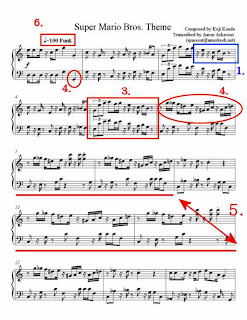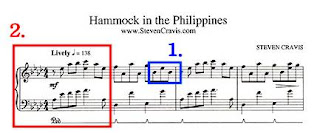For everyone who thinks critical-analyzing videogames is only useful in the realm of gaming, I've started this small series of posts about finding the "game" in life. This is not to say that I'm taking life lightly, much to the contrary. A Videogame is essentially a group of functions with a goal. The function relies on the interaction between the game and the player. In order for the game to indoctrinate players into the rules and nuances of the game world, designers utilize the power of "form fits function" along with many other design philosophies.
In the same way, anything that relies on interacting with people are designed with such philosophies in mind. In order for most Americans to successfully use a microwave, there has to be a limited number of buttons and functions that are grouped and color coded in such a way as to facilitate use. Public education is like a game. High school is a system with a set of rules designed to educate students. When designing around people, every small detail matters. I remember when the tiles in my high school hallway were rearranged to separate the walking and standing areas in order to decrease traffic and subsequently late students. Like I said, everything matters.
Ideally in any interactive system, everything must be carefully designed and refined so that it works for the varying types of people within the target user base. And what has function can be analyzed. Performing a functional analysis is very similar to formulating a New Classical critical essay on a videogame. Analyzing how the form and elements of the system supports the primary function is key.
So I'm starting off with something small. When I think about the form that GuitaRPG will take at different points in the game, I can't help but think of sheet music. And when I think of sheet music, I can't help but remember how complex and difficult it is to read. It's not just me either. When I spoke with my piano instructor who is also the head of the music department at SMU, he commented on how unnecessarily difficult reading music is for musicians, and how some people are experimenting with new ways to notate music.
So if Sheet Music was a Game....
- Primary Function: To be read smoothly by a musician so that he/she can play a piece accurately.
- Secondary Function: To contain all the notations necessary to play a piece of music as the original author or transcriber intended.
- The Notation Form doesn't match their Function: In both blue boxes, there are notes that are written on specific lines. In Mario these notes are E, C, D, and B. In Hammock, though the notes fall on the same lines, the notes are Bflat, Eflat, and Bflat again. Having such a discrepancy in the basic level of interpretation would be detrimental in any videogame. Just imagine if in Super Mario Brothers, the coins were randomly solid, or even more terrifying, the mushrooms randomly killed you. The form of any system must be consistent with its function.
- The Key Signature makes you work for yourself: The key signature sets up the key of a song or a section of music which tells the player which notes will be sharp or flat. Because some key signatures have numerous sharps or flats (see image) the writers don't trouble themselves correctly notating each note that is sharp or flat. Basically, the player has to memorize the order of sharps or flat, and keep that information hovering in their mind so that when they see what looks like a normal note, they automatically augment it or diminish it. What's the point of reading music on the page when you have to keep such things straight in your head? Ironically, the Mario Theme sheet music is free of this particular issue.
- The Fine Line of Clutter: Each staff in music is made up of five lines. Piano music in particular is written with two staffs at a time. Not only does each line and each space represent a different note between the two otherwise identical staffs, but the white areas in the middle and the areas above and below the double staffs can also contain notes. As you can see in box 3, the notes in the middle section have tiny little lines that essentially extend the five lines of the bottom staff. I have never been able to accurately and easily distinguish notes in such arrangements. Since the beginning of my music training, I've always had to squint, lean forward, and count the lines one by one. This set up is too cramped. It's too easy to mistake one note for another.
- Little bits of additional detail: In addition to the level of fine detail created from the notes and staff lines, marks can also be given to each note. In both bubbles at 4 there are small notations for sharps, flats, naturals (which turn a note back to normal), and staccato. With every level of fine detail, reading music smoothly becomes harder and more stressful.
- Incongruous Time: Generally in sheet music, each measure represents an equal amount of time. Because there are moments where a single measure can contain several notes with complex notations, the amount of space needed for the measure may increase. The four measure underlined at number 5 all represent the same time. But judging from the size of each, it would seem that the bottom two measures are longer. Though it is obvious to any experience musician that the measure size doesn't correspond to time, the form the measure create gives this impression.
Games like Guitar Hero have a form of notation that intuitively fits its function. By color coding the notes, making the note circles large and easily discerned at high speeds, arranging the staff continuously without breaks, angling the staff so that the future notes can be seen ahead of time, marking the staff with measure lines, moving the staff at the correct tempo, and having a fixed line at the bottom of the screen where notes must be played create a notation system that trumps sheet music for its individual purpose. It's no wonder Guitar Hero, Rock Band, and other music rhythm games have been so successful.

